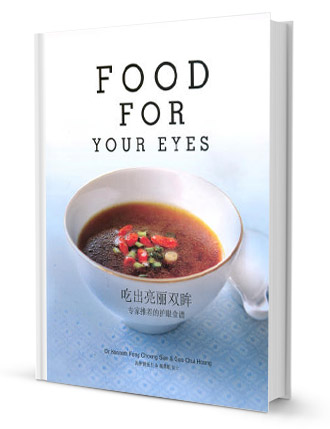
Retinal Vein Occlusion (RVO)
Patients who suffer from retinal vein occlusion (RVO) may have very severe loss of vision and often have other significant health problems like high blood pressure, diabetes, and high levels of cholesterol in the blood.
THE retina is a transparent layer at the back of the eye that receives visual information and converts it to electrical impulses which is transmitted to the brain via the optic nerve. The retina is analogous to the film at the back of a traditional film-based camera. The blood supply of the retina is predominantly the central retinal artery while the blood flows out via the central retinal vein. Both these blood vessels travel along the optic nerve, which is located at the back of the eye.
Retinal vein occlusion (RVO) is a common cause of painless visual loss that occurs suddenly and can lead to severe loss of vision. It occurs in about 0.5% of the population, so in Malaysia, it is estimated that more than 100,000 people will have this problem. It is more common in patients above the age of 50 years.
There are two main types of RVO – central retinal vein occlusion (CRVO) and branch retinal vein occlusion (BRVO). BRVO is twice more common than CRVO. Visual loss occurs due to swelling in the macula (macula oedema), which occurs in both these types of RVO.
The macula is the most important part of the retina as it detects very fine detail and colour and any damage to it will cause reduction in our vision.
What causes retinal vein occlusion?
RVO occurs due to blockage of the vein. This usually happens when the retinal veins are compressed by the retinal artery next to it. Like all arteries in the body, the retinal artery naturally thickens with age, especially if we have diseases like hypertension and high cholesterol levels in our blood. This thickening of the retinal artery causes narrowing of the retinal vein which is usually located next to the artery. There is reduction of blood flow in the retinal vein leading to blood clot formation and finally total blockage of the vein.
When the retinal vein is blocked, the pressure within the vein increases, causing leakage of blood and fluid out into the retina. The retina also becomes starved of oxygen (ischaemic) and there is an increase in the levels of a growth factor called vascular endothelial growth factor (VEGF). VEGF causes further leakage of fluid from the blood vessels and increases macula oedema.
Sometimes, there is growth of abnormal new blood vessels on the surface of the retina. These blood vessels are fragile and easily bleed into the eye. These blood vessels can also grow in the front of the eye on the pupil and can bleed and cause raised eye pressure. This can be very painful and difficult to treat.
What are the risk factors for retinal vein occlusion?
There are several major risk factors for developing RVO. These are: high blood pressure, high levels of serum cholesterol, diabetes, and glaucoma. For patients younger than 50 years old, they often have blood clotting diseases like high serum homocysteine and antiphospholipid syndrome. In females, the use of the oral contraceptive pill is associated with a higher risk of RVO.
Patients who develop CRVO tend to do badly without any treatment. Only 20% of patients have an improvement of vision without treatment. Most patients (80%) lose significant amounts of their vision with this condition and a large percentage of untreated eyes can also develop glaucoma and bleeding in the eye.
BRVO has a better prognosis than CRVO as the patient’s vision is usually not as badly affected. If there is macula oedema present, the visual acuity does improve with treatment. Less than 1% of patients will develop bleeding in the eye in BRVO.
In a few large population studies like the Beijing Eye Study, RVO was associated with a significantly increased risk of death from cardiovascular disease. Men who developed RVO had a two times increased risk of developing stroke. As such, when a patient develops RVO, it is often a sign of significant cardiovascular disease like high blood pressure and they are at higher risk of developing heart attacks or stroke in the future.
Prevention of retinal vein occlusion
Patients with high blood pressure, high levels of cholesterol in their blood, and who have diabetes are at increased risk of developing RVO. It is important to ensure that these common diseases are well controlled in order to reduce their future risk of getting RVO.
Patients with rare diseases like thrombophilia (blood clotting disease) or high levels of homocysteine are also at risk and need good control to prevent it from occurring.
Once a patient has got RVO in one eye, they have a 15% chance over five years of getting it again in the same eye or the other eye. It is important to screen patients for those diseases in order to treat them to prevent future occurrences of RVO.
Patients with RVO have a higher risk of death from heart attacks and stroke and it is even more important to treat these systemic diseases, especially high blood pressure, to prevent that from happening.
Treatment of retinal vein occlusion
Treatment of RVO can be divided into two main categories:
1. To improve vision by treating macula oedema
2. To prevent complications like glaucoma (raised eye pressure) and bleeding in the eye
The two main ways of treating RVO is by using laser to create burns on the retina and by injecting drugs into the eye.
Treatment of macula oedema in retinal vein occlusion
Macula oedema (fluid in the inner layer of the retina) is the main cause of visual loss in RVO. The macula is the most important part of the retina as it detects fine detail and colour. In the past, laser treatment was done on the areas of the retina that was swollen with fluid. For patients with central retinal vein occlusion (CRVO), this was not found to be effective. For patients with branch retinal vein occlusion (BRVO), laser treatment has some small benefit.
Recently, new scientific data has shown that several drugs may be better than laser treatment for macula oedema in RVO. These drugs need to be injected into the eye and include triamcinolone, Ozurdex (a long term steroid implant), and Lucentis or Avastin (both are antibodies to vascular endothelial growth factor (VEGF)). The main risk of any eye injection is an infection, but fortunately, this is rare and occurs in one out of 2,000 injections. If an infection occurs, it can be easily treated with antibiotics. Very rarely, loss of vision can occur if the infection is very severe.
Intravitreal injection of Triamcinolone Acetonide (IVTA)
Triamcinolone acetonide is a steroid drug that is often used for injections into bone joints with arthritis. A large study from the US (SCORE study) has reported that IVTA is effective for treatment of macula oedema in patients with CRVO after one year of follow-up. It was not better than laser therapy for macula oedema in patients with BRVO. Some patients needed a repeat injection after four months.
The main problem with this treatment is that more than 30% of the patients treated will get cataract and glaucoma (raised eye pressure) that requires further treatment. IVTA has been widely used worldwide for the last eight years for other retinal diseases like diabetic macuolopathy macular degeneration.
Intravitreal injection of a long term steroid implant (Ozurdex)
Ozurdex is a special implant that contains dexamethasone (a steroid drug). Once injected into the eye, it gradually releases the drug over six months. It has recently been approved for use in the US but is not yet available in Malaysia. The results show that patients with macula oedema due to CRVO or BRVO both had improvement of vision after this treatment. In terms of side effects, 25% of patients developed glaucoma while less patients compared with IVTA treatment (4% ) developed cataracts.
Intravitreal injection of Lucentis
In RVO, there is an increase in the levels of a particular growth factor called vascular endothelial growth factor (VEGF). VEGF causes macula oedema to occur and special new antibody drugs to block this molecule have been developed. Lucentis is a VEGF antibody that was developed specifically for injection into the eye for another common eye disease, age-related macula degeneration. Avastin is another VEGF antibody that was originally designed for intravenous infusion in patients with colorectal cancer. It is now widely used for various retinal diseases as an off-label drug by injecting very small amounts of it into the eye.
Recently, two large studies in the USA (The CRUISE and BRAVO trials) have reported the effectiveness of Lucentis in treating macular oedema in CRVO and BRVO. Treatment was given every month for six months. Patients were found to have rapid improvement of vision one week after the first injection which was maintained for six months. The visual improvement found in the Lucentis treated group was much better than the laser therapy group and patients who received Lucentis injection were twice as likely to get a significant improvement compared to those receiving laser therapy. Very few side effects were found to occur in the Lucentis treated patients.
Treatment to prevent complications in retinal vein occlusion
The two main complications of RVO are glaucoma and bleeding in the eye. This occurs due to abnormal new blood vessels growing inside the eye due to the lack of oxygen caused by the RVO. These blood vessels can bleed easily inside the eye and cause loss of vision.
The eye pressure can also increase and cause the eye to become completely blind and painful. To prevent this from happening, it is sometimes necessary to perform laser treatment on the retina. These laser burns destroy the peripheral parts of the retina to prevent these new blood vessels from growing. It can also cause these new blood vessels to disappear.
Patients with RVO have to be seen in the eye clinic regularly to detect these new blood vessels for treatment to be given promptly to prevent these complications from occurring.
Cataract Surgery
What is a cataract?
A cataract is clouding of the lens in your eye. This is usually due to old age but can also occur due to trauma, diabetes, or due to medications.
Cataract surgery is done when the lens in your eye has become cloudy making it difficult for you to see well enough to carry out your usual daily activities. If the cataract is not removed, your vision may stay the same, but it will probably gradually get worse. Waiting for a longer period of time may make the operation more difficult. If you are considering surgery, please let the doctor know if you are taking the following medications: Flomax (Tamsulosin), Doxazosin, Asprin, or any blood thinning drugs like Warfarin, Plavix or Ticlid (Dipyradimole). These medications may need to be stopped before surgery.
You can listen to Dr Fong talking about cataract surgery.
Phacoemulsification surgery
The purpose of the operation is to replace the cataract with a plastic lens (implant) inside your eye. This usually done under local anesthesia. With a local anaesthetic you will be awake during the operation. You will not be able to see what is happening, but you will be aware of a bright light...
Read More

Recent articles on retinal diseases
Retinopathy of Prematurity
What is retinopathy of prematurity? Retinopathy of prematurity (ROP) occurs in infants who are born prematurely, where blood vessels in the retina do not form normally. The retina is a thin sheet ...
Latest news about nutritional supplements for AMD patients
Since 2006, eye doctors have been recommending a high dose of antioxidants and zinc for AMD patients to reduce their risk of getting advanced AMD (bleeding at the macula). The doses of Vitamin C, E, b...
Recovery after vitrectomy for epiretinal membrane
Epiretinal membrane is also known as macula pucker or cellophane maculopathy. Recovery after vitrectomy surgery to remove this fine scar tissue covering the macula can take up to 3 months. Surgery is ...
TV and radio interviews
- Bionic eye
- Dubious eye treatments and other current issues
- Dr Fong spoke at TEDx KL in Kuala Lumpur on 8 August 2015 to more than 5000 people about Myopia.
- Dr Fong interviewed live on TV about AMD and Food For Your Eyes
- Dr Fong is featured as a medical expert on Stan Lee’s Superhumans TV show
- What is AMD ? (in Mandarin)
- What is diabetic retinopathy? (in Mandarin)
- Best of eye advice in 2013
- Diabetic Eye Photos
- Systemic diseases and your eyes







